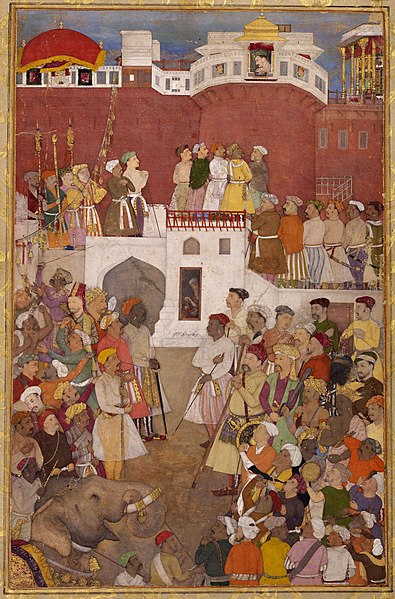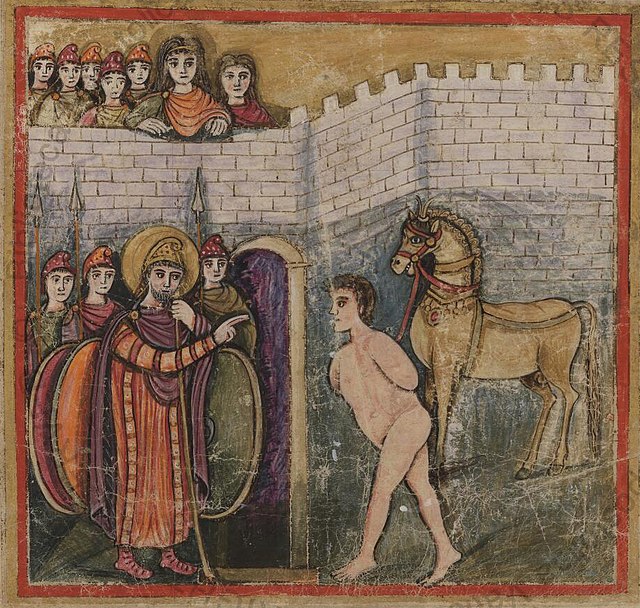Mughal painting is a South Asian style of painting on paper confined to miniatures either as book illustrations or as single works to be kept in albums (muraqqa), originating from the territory of the Mughal Empire in the Indian subcontinent. It emerged from Persian miniature painting and developed in the court of the Mughal Empire of the 16th to 18th centuries. Battles, legendary stories, hunting scenes, wildlife, royal life, mythology, as well as other subjects have all been frequently depicted in paintings.
Govardhan, Emperor Jahangir visiting the ascetic Jadrup, c. 1616–1620
The Emperor Shah Jahan standing on a globe, with a halo and European-style putti, c. 1618–19 to 1629
Abu'l Hasan, Emperor Jahangir at the Jharoka window of the Agra Fort, c. 1620, Aga Khan Museum
Nilgai by Ustad Mansur (fl. 1590–1624), who specialized in birds and animal studies for albums
Miniature (illuminated manuscript)
A miniature is a small illustration used to decorate an ancient or medieval illuminated manuscript; the simple illustrations of the early codices having been miniated or delineated with that pigment. The generally small scale of such medieval pictures has led to etymological confusion with minuteness and to its application to small paintings, especially portrait miniatures, which did however grow from the same tradition and at least initially used similar techniques.
Miniature of Sinon and the Trojan Horse, from the Vergilius Romanus, a manuscript of Virgil's Aeneid, early 5th century
Miniature of Abraham meeting angels, from the Cotton Genesis, 5th–6th century.
Miniature of seven physicians from the Vienna Dioscurides, early 6th century.
Ejmiadzin Gospel, 6th-7th centuries








